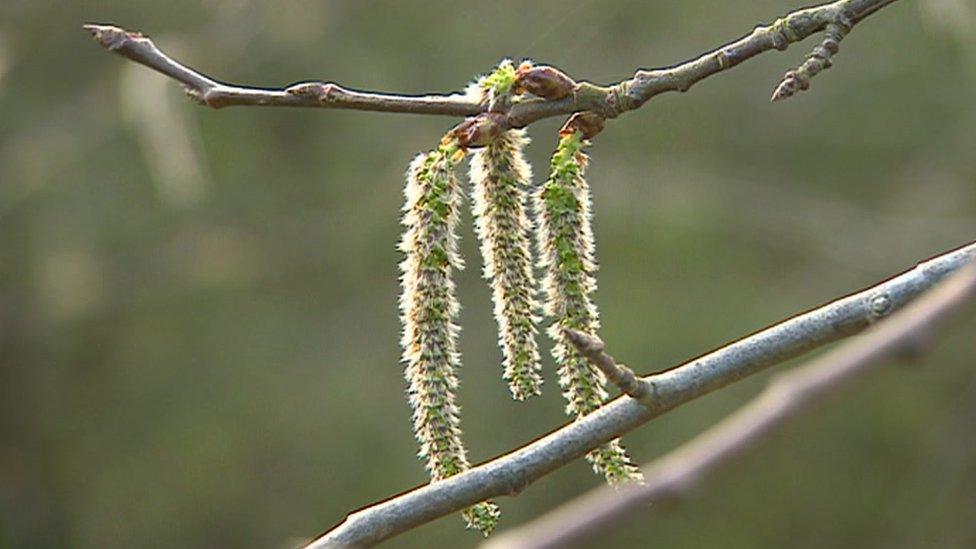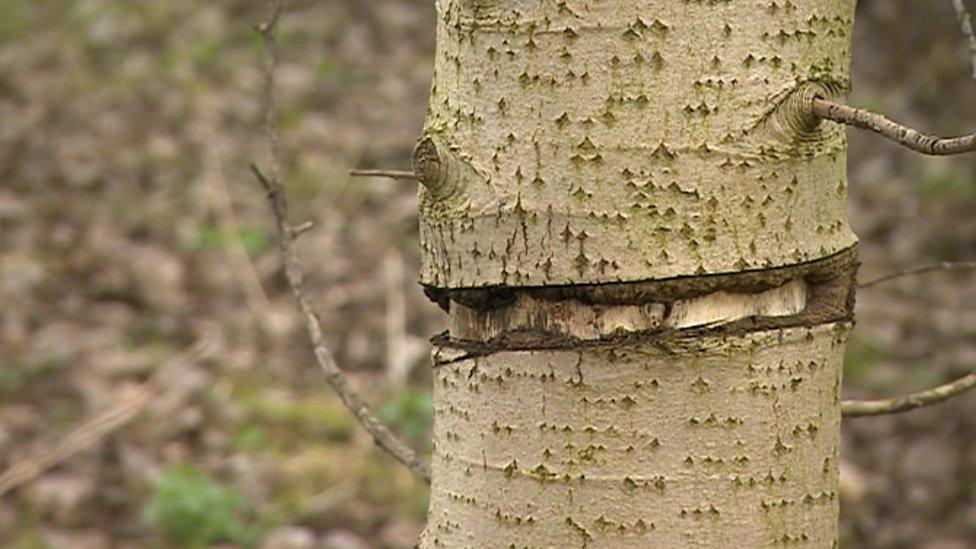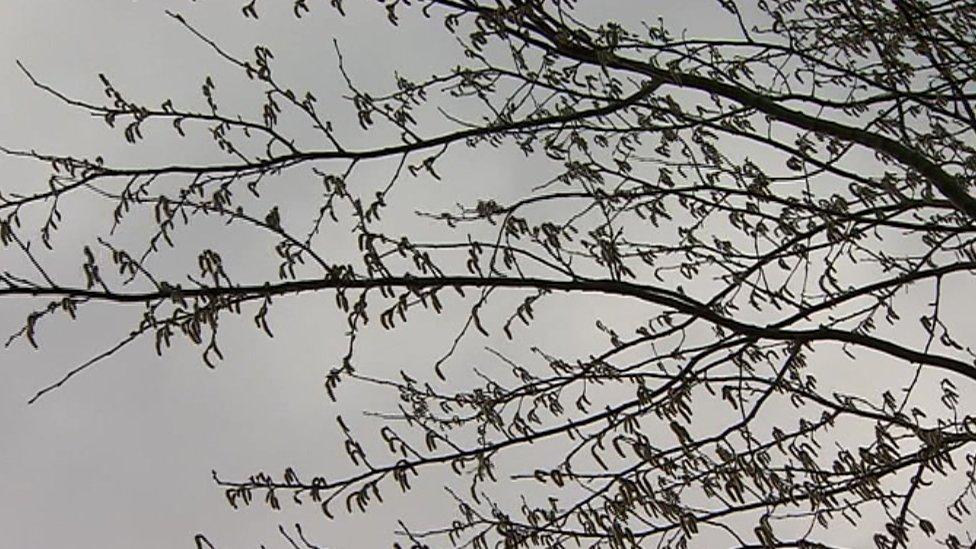Simulated beaver attacks trick aspens to produce seeds
- Published

Aspen flowers form as catkins. These are on a female tree and the seeds are growing on the outside of the catkin
Aspens are one of our most beautiful native trees and there's a huge demand for seeds to grow new ones for planting.
Trouble is, the aspen tree itself doesn't like to produce seeds which makes life very difficult for everyone.
But last year I visited Shropshire company Forestart and helped them out with their plans to get their aspens in a seed producing mood.
Forestart harvests a billion wild tree seeds every year to grow into new trees for planting.
You can read a blogpost about their plans here, but here's the general gist.
Aspen trees usually reproduce by sending up suckers, thin plants that are clones of the parent tree.
That's no good for Forestart who need seeds to grow new aspens.
The last time aspens in Scotland flowered and produced seeds was twenty years ago.
Simulated beaver attack
So Robert Lee from Forestart, external had a plan. I helped him remove a ring of bark around each of his aspen trees.
Not all the way around as that would kill the tree, but a strip about an inch wide round most of the trunk.
The idea was to simulate a beaver attack on the tree, stressing the tree out and forcing it to produce flowers and then seeds.

The ring of bark we removed in June last year is healing nicely
Well this week I returned to see if the experiment had worked and an amazing sight greeted me, eight aspen trees all covered in catkins. It's something that you very rarely see in nature.
Robert explained to me I'd missed the very best display and a windy day had rather done for the flowers on the male trees but overall it was a remarkable thing to see.
It's also really good news for Robert as if all goes to plan he and his team will be able to gather a huge volume of aspen seeds later in the year.
End of the seed shortage?
Can we be sure it was our intervention that made the difference?
Well yes, as Robert cut the bark so that some trees had branches below the exposed part of the tree.
Those branches had no flowers, no catkins, while the rest of the tree was laden.

The tree canopy is full of aspen flowers
It's not totally clear why this worked, it could be the stress as Robert first though or it might be the ring of removed bark blocks the goodness in the aspen leaves from returning to the roots and instead keeps it all in the tree canopy which in turn leads to an eruption of flowers.
The trees themselves are healing nicely and while this won't be an annual event it is something Forestart could repeat in the future.
Meaning more chances for people who want to plant this most wonderful of our native trees.
The only slight cloud on the horizon is if the whole effort is too successful, we get a lot of seeds and the local bird population treat the aspen seeds as a very expensive lunch.
Fingers crossed the siskins find something else to eat instead!